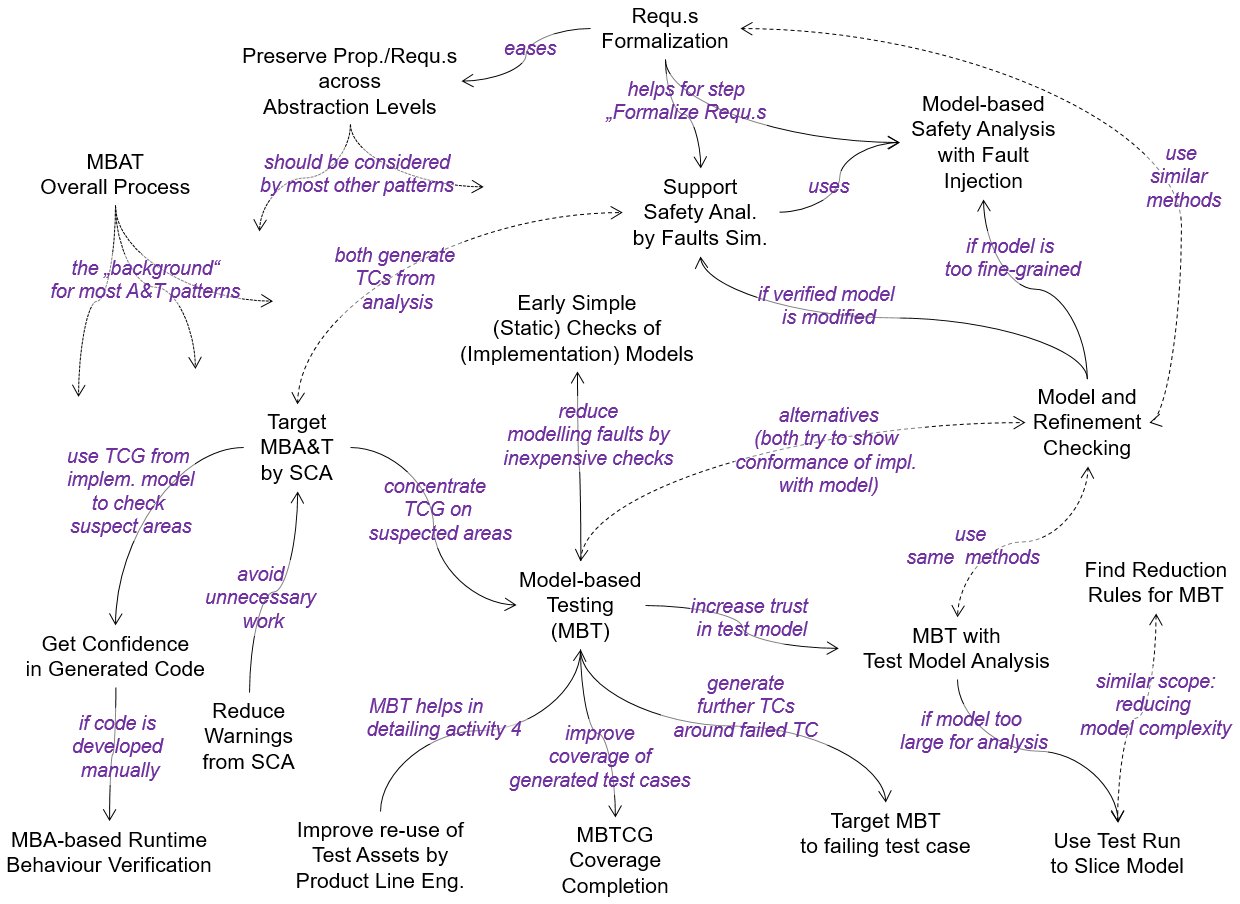The A&T-Patterns
A&T-Patterns have been developed in the frame of the ARTEMIS-project  .
.
Following diagram indicates the most relevant relations between the patterns described here. Bold pattern names indicate new main patterns for testing and validating ACPS. The table below the diagram gives short pattern descriptions.

| Pattern Name | Purpose |
| MBAT Overall Process | The “meta-pattern” of the MBAT methodology |
| Early Simple (Static) Check of (Implementation) Models | Optimize model-based A&T by performing inexpensive (robustness) checks |
| Get Confidence In Generated Code | Increase confidence that the function and behaviour of code matches that expressed in an implementation model |
| Improve Re-use of Test Assets by PLE | Product Line Engineering (PLE) helps to reduce effort and to improve quality of test model variants by identifying commonalities and variabilities within a product family |
| MBA-Based Runtime Behavior Verification | Ensure that the runtime behaviour of the system matches the models that are used as the input for static model-based analysis |
| Model-Based Testing (MBT) | Use models to guide and support testing of a target system |
| MBT with Test Model Analysis | Increase confidence in generated tests by analysing the model from which tests are generated |
| Preserve required Properties across Abstraction Levels | Presere requirements and properties through verification across system- and abstraction-levels |
| Reduce Warnings from SCA | Reduce number of false positives from Static Code Analysis (SCA) |
| Requirements Formalization | Generate formal requirements based on natural language requirements, which can subsequently be used for formal analysis and model checking |
| Coverage Completion for MBTCG | Improve the coverage obtained in a test suite that likely has incomplete model and code coverage |
| MBSA with Fault Injection | Perform a so-called Model-Based Safety Analysis (MBSA) by injecting faults into the nominal system model |
| Find Reduction Rules for Model-Based Testing | Reduce the number of generated test cases by avoiding stimuli for input parameters which don‘t affect the output |
| Model and Refinement Checking | Verify that an implementation satisfies formal properties through model-checking and testing |
| Support Safety Analysis by Fault Simulation | Avoid re-running an expensive analysis technique by performing a simulation of a counter-example generated with fault injection |
| Target MBA&T by SCA | Facilitate MBA&T targeted to suspect code area, to either find defects in this particular area, or increase confidence in their absence |
| Target MBT to Failing Test-Case | Generate additional related test cases in the same model neighborhood due to bug cluster assumption |
| Use Test Run to Slice Test Model | Rule out further defects along known failing or suspect test(s) by analysis |
